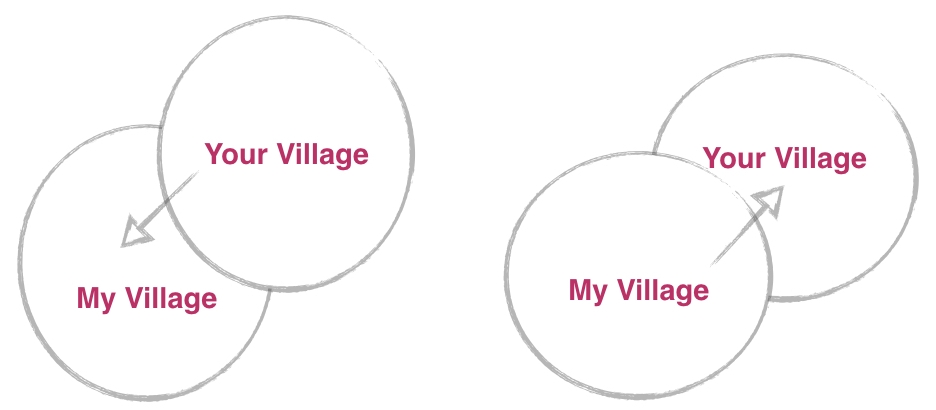Travel as an Attitude
One's destination is never a place, but a new way of seeing things. - Henry Miller
When I worked in the corporate world, I remember waiting for the two weeks of travelling somewhere new and exotic to finally feel alive.
To extend this feeling, I even took six months off to travel around the world nine years ago with my then husband. It was a wonderful experience - and it actually taught me something very unexpected.
It taught me that travel can be an attitude. That travel doesn't have to be to a far flung exotic destination. It doesn't even have to be a time when we are away from our daily lives of work and family.
Instead, we can also apply the aspects of travel we love to our everyday lives.
We can start building a life we already love, that is filling with alive-ness, instead of seeing travel as an escape from an un-alive life.
Here are five suggestions to start bringing travel as an attitude to every day life.
1. Travel as an attitude means embracing discomfort as a necessary path to growth.
Travel is often about taking a small step - or many steps - away from our comfort zone. This moving out of our comfort zone is where magic can happen - where we discover aspects of ourselves we didn’t even know existed.
Everyday life provides plenty of opportunities to push past our fears - from moving away from a situation or relationship that is no longer working to standing up for ourselves, signing-up to a dating app or even opening up a little bit more with someone we care about.
Travel as an attitude embraces all forms of discomfort as a path to growth - not just the physical discomfort of travel, but also the emotional discomfort that comes from personal growth.
2. Travel as an attitude means being open to new experiences wherever we are.
Travel enables us to experience new things — both man made and natural. Seeing kangaroos on a beach at sunrise, taking a helicopter ride or experiencing Angkor Wat at sunset?
Definitely awe-inspiring.
Yet daily life also provides plenty of opportunities for new experiences IF we create them. These can be as small as trying a new café or restaurant in the city we live in, taking a new class, learning a new language, reading a book or buying an unknown vegetable when grocery shopping.
We can make time to watch the sun set after work or take a different path to work. We can always create new experiences.
3. Travel as an attitude sees differences as enriching rather than threatening.
Travel opens our minds to different ways of doing things. It gently, and sometimes not so gently, reveals that other ways, beliefs and attitudes exist - and that they, too, are valid and even fascinating. In doing so, it provides the opportunity to re-examine our own beliefs and habits.
In everyday life, we are faced with different beliefs and attitudes all around us, yet we often don’t choose to see these as intriguing - annoying is probably a more apt description!
Yet we can always choose to be open to differences in opinions and values that come from our family or co-workers - with appropriate boundaries, of course! Accepting them with the same openness and curiosity we show ‘foreign’ cultures can be a novel experience.
Instead of seething with resentment, we could become curious about this difference:
I wonder why my colleague / family member / boss is reacting in this way? How do they see the world differently to me? What is it about their reaction that triggers me?
Perhaps we will notice what Carl Jung wrote - that "Everything that irritates us about others can lead us to an understanding of ourselves."
4. Travel as an attitude means being open to connection.
Away from the cocoon of our known lives, we are more vulnerable and open, both with people we know and people we don’t. And while we don't always stay in touch with those we meet, for a brief moment, we have walked along the same path, and this interaction leaves us all the richer. It can act as a humble reminder, as Maya Angelou wrote, that "We are more alike, my friends, than we are unalike".
We don’t actually need to physically travel to connect with people or be just a little more open and vulnerable with people around us. We can choose to put our phones down in public places and connect, even if this is just a brief moment of connection.
5. Travel as an attitude means taking distance from life.
Being able to briefly press the pause button on everyday routines provides a bird’s eye view of life. Travel enables us to assess what matters most, to re-evaluate our priorities and what we want or need to change in our daily lives.
A physical change in environment is helpful - yet when this isn't possible we can also explore other ways of gaining a little perspective such as journaling, meditating, yoga, going into nature, therapy/coaching or simply leaving more space to just BE instead of overbooking the week.
Nothing will ever replace real travel, of course. But what I have found by bringing travel as an attitude into my life as much as possible is that I no longer see travel as an escape from life but a way to enhance a life I already enjoy.
I haven't gone anywhere this summer, so this is one of my attempt at living Travel as an attitude: Trying out an awesome new café in Lausanne - Ca Passe Crème - in the great company of Tony Johnston - freelance video, animation and podcast producer who took this photo.
I drank a delicious cold drink called cascara which is made from the cherry blossoms of the coffee bean.












